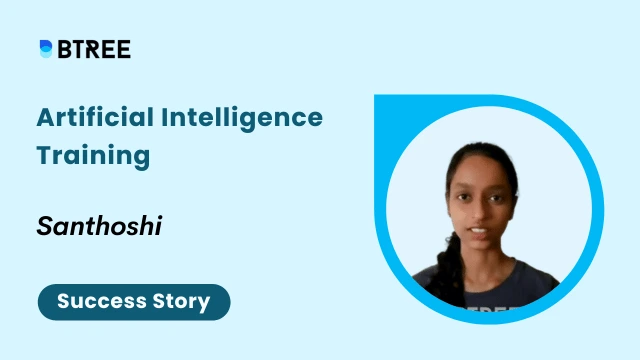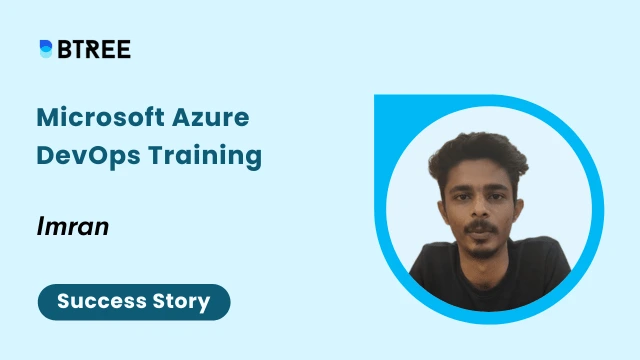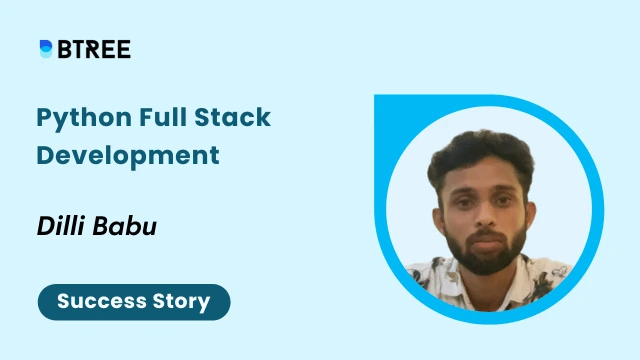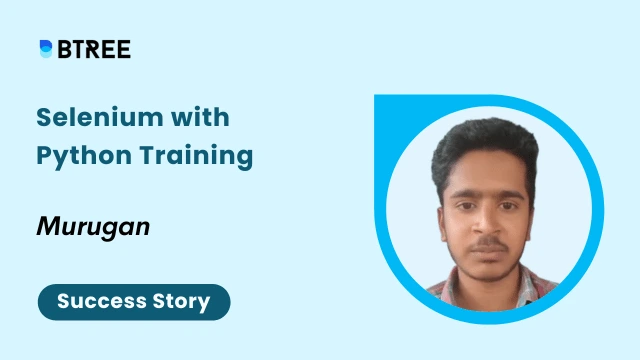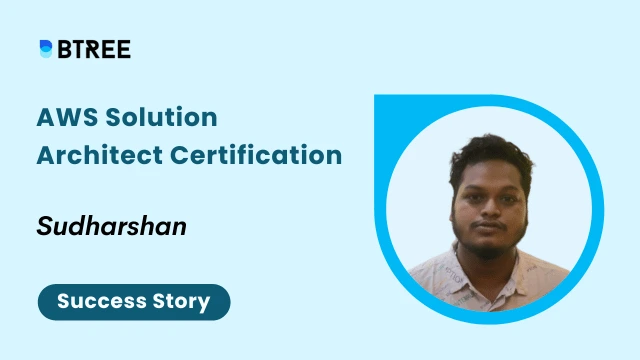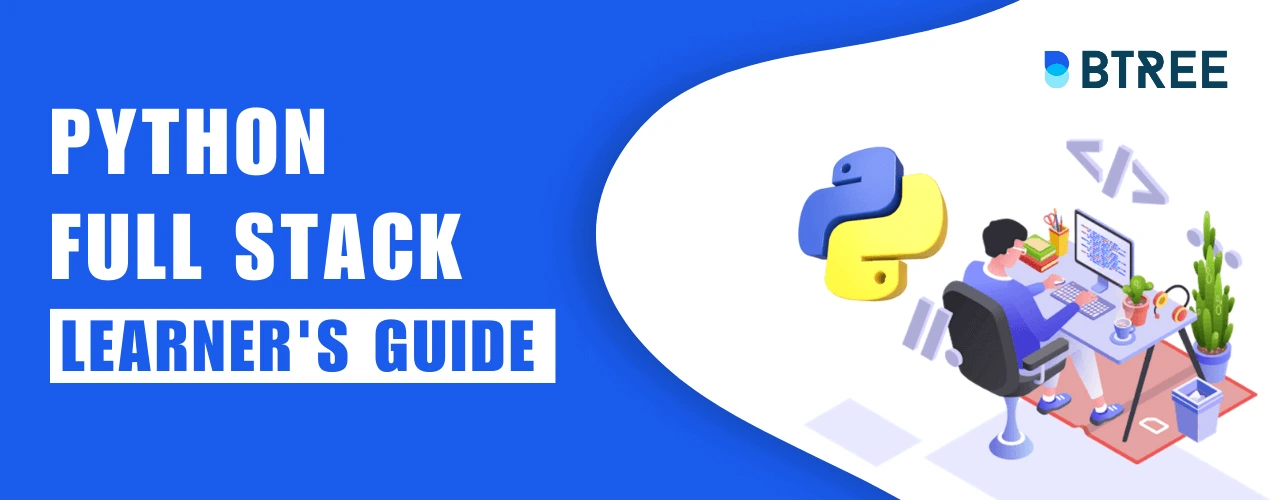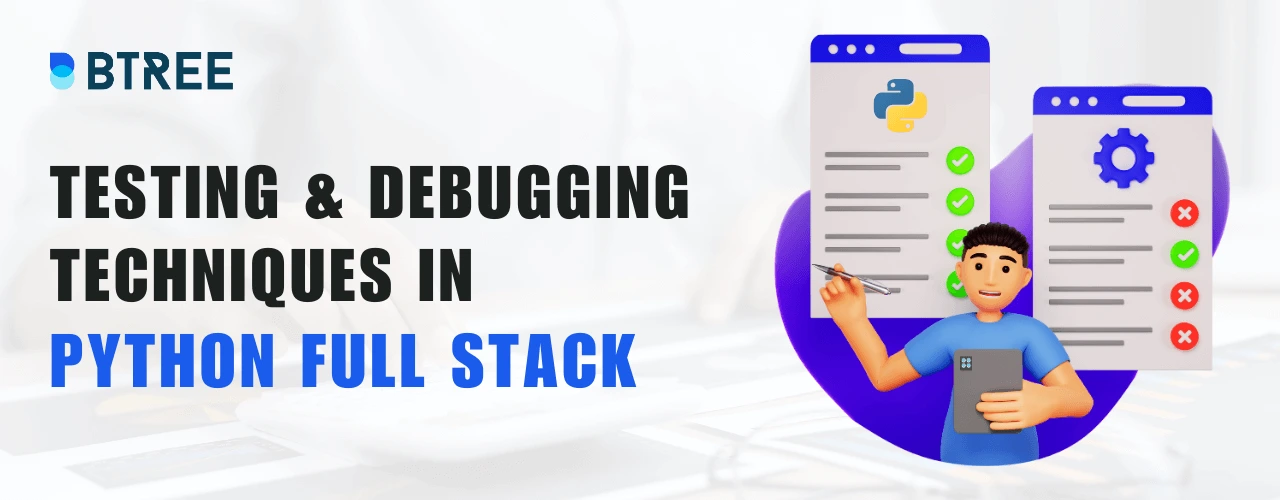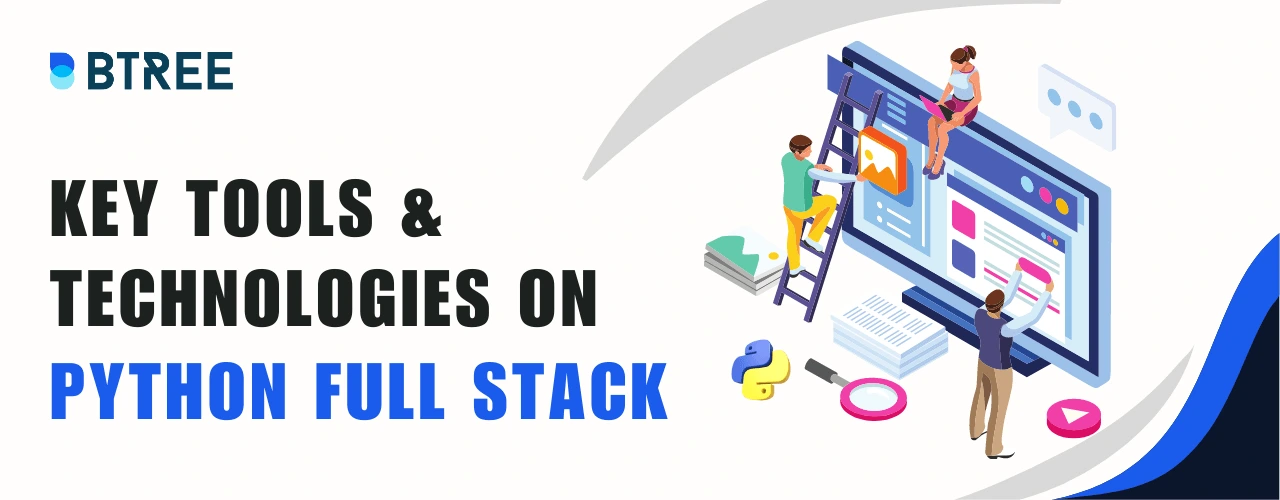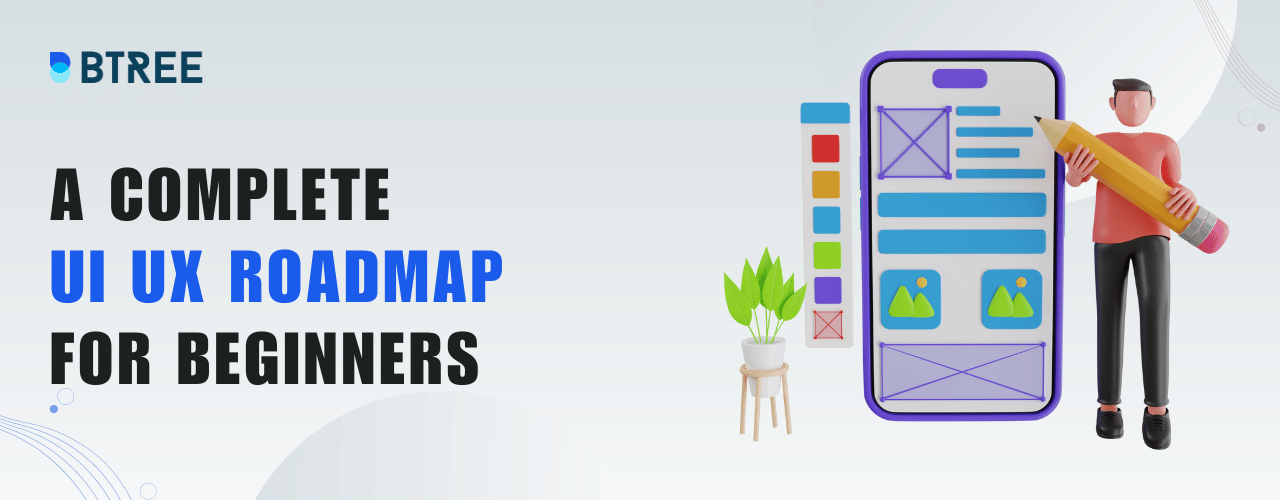Full Stack Developer Interview Questions
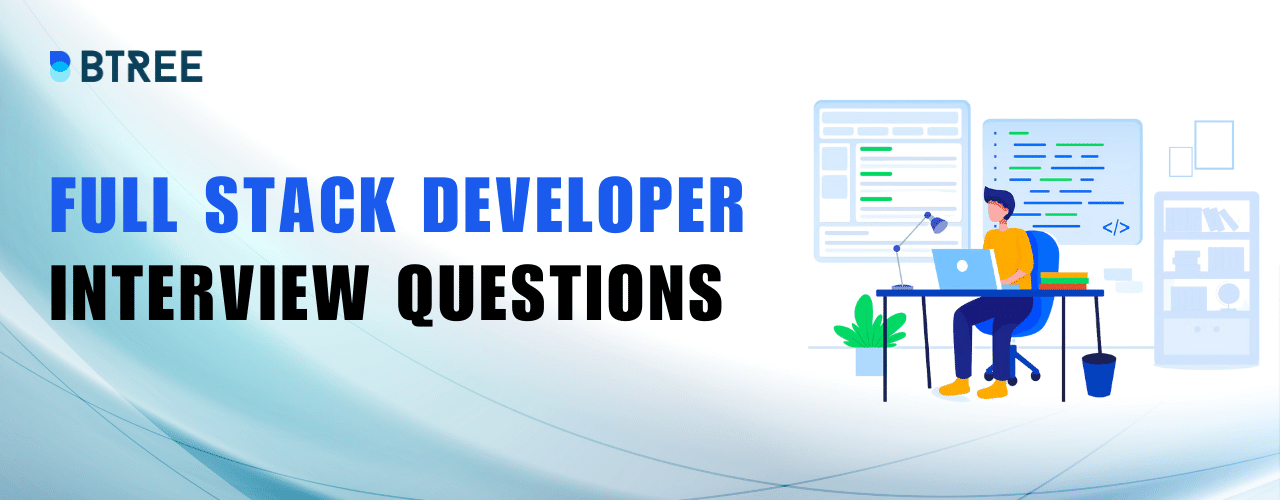
By interviewing a candidate, the interviewer can determine their level of ability. The following blog will give you a guide to the types of questions you might encounter during a full stack interview. The following is a list of the most common full stack developer interview questions and answers that are asked in interview rounds.
The Role of a Full Stack Developer
It was necessary to master at least one front-end framework and one back-end technology to become a full stack developer. To pursue this full stack developer role.
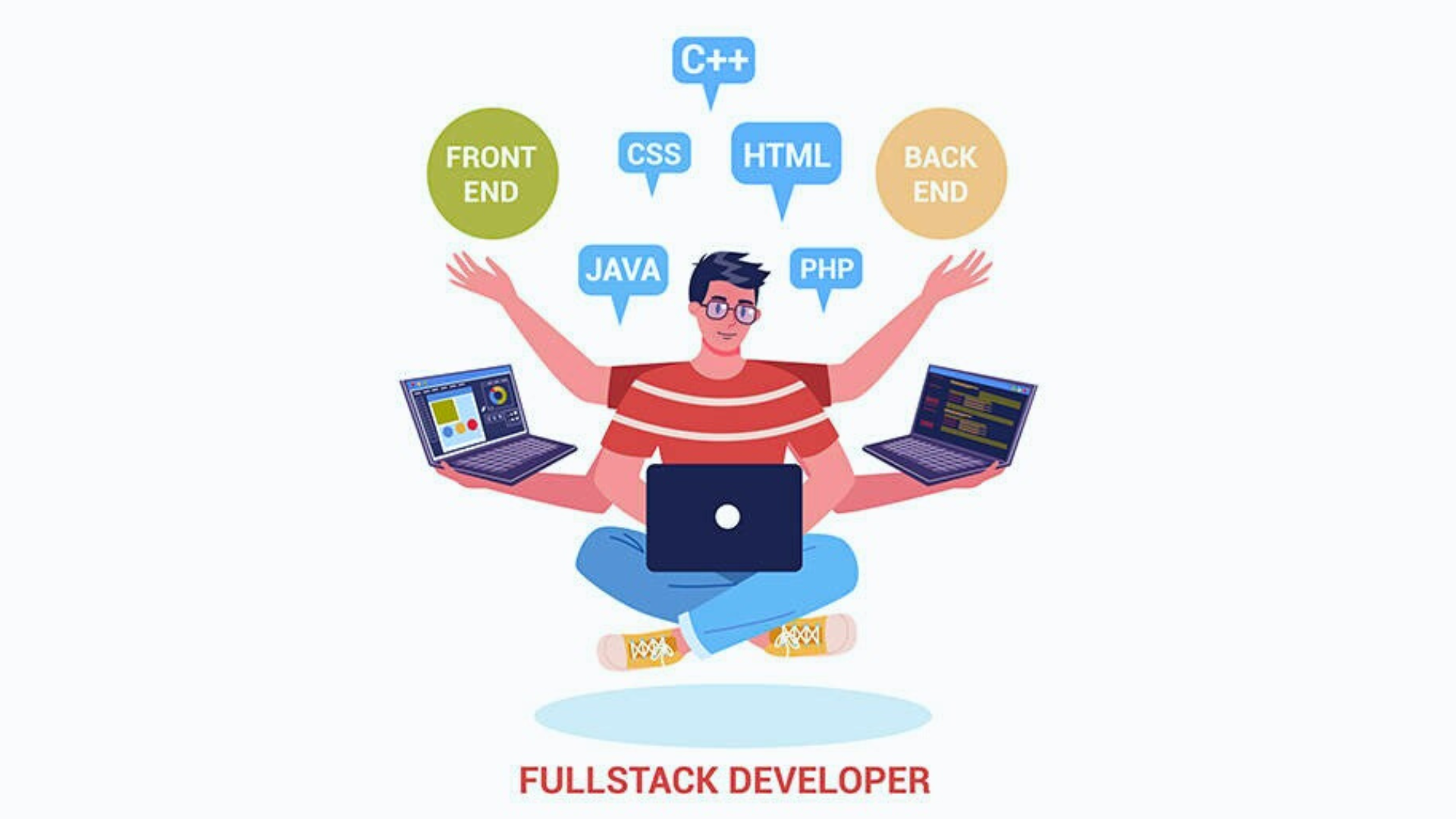
Technical expertise:
Frontend
The fundamental frontend languages, such as HTML, CSS, and JavaScript, as well as crucial frontend development components, such as validation, responsiveness, and user experience, must be understood by full stack developers. They should be familiar with at least one frontend framework (Angular, React, Vuejs, Backbonejs, jQuery).
Backend
They must have knowledge of the backend frameworks (Django, Spring, .Net, Express.js, Rails), at least one backend language (PHP, Java, C#, Ruby, Python), APIs, databases, and server setup.
Database
Full stack development also requires effective database administration. They must be able to use the fundamental database functions, such as storing, creating, managing, and deleting data. One of the key competencies of a full stack developer is the ability to work with database software such as Oracle, MySQL, NoSQL, and PostgreSQL.
Careers for Full Stack Developer
The fact that Full Stack Developer positions are among the highest-paying positions in India and a solid foundation for your career pleases us. This is primarily due to the demand for it and the dearth of knowledgeable personnel in this field. In India, full-stack engineers make INR 9.24 LPA on average. An experienced full stack developer in their mid-career makes an average of 11.3 lakhs per year. A full stack engineer with ten to twenty years of experience may expect to get an annual salary of 19.3 lakhs.
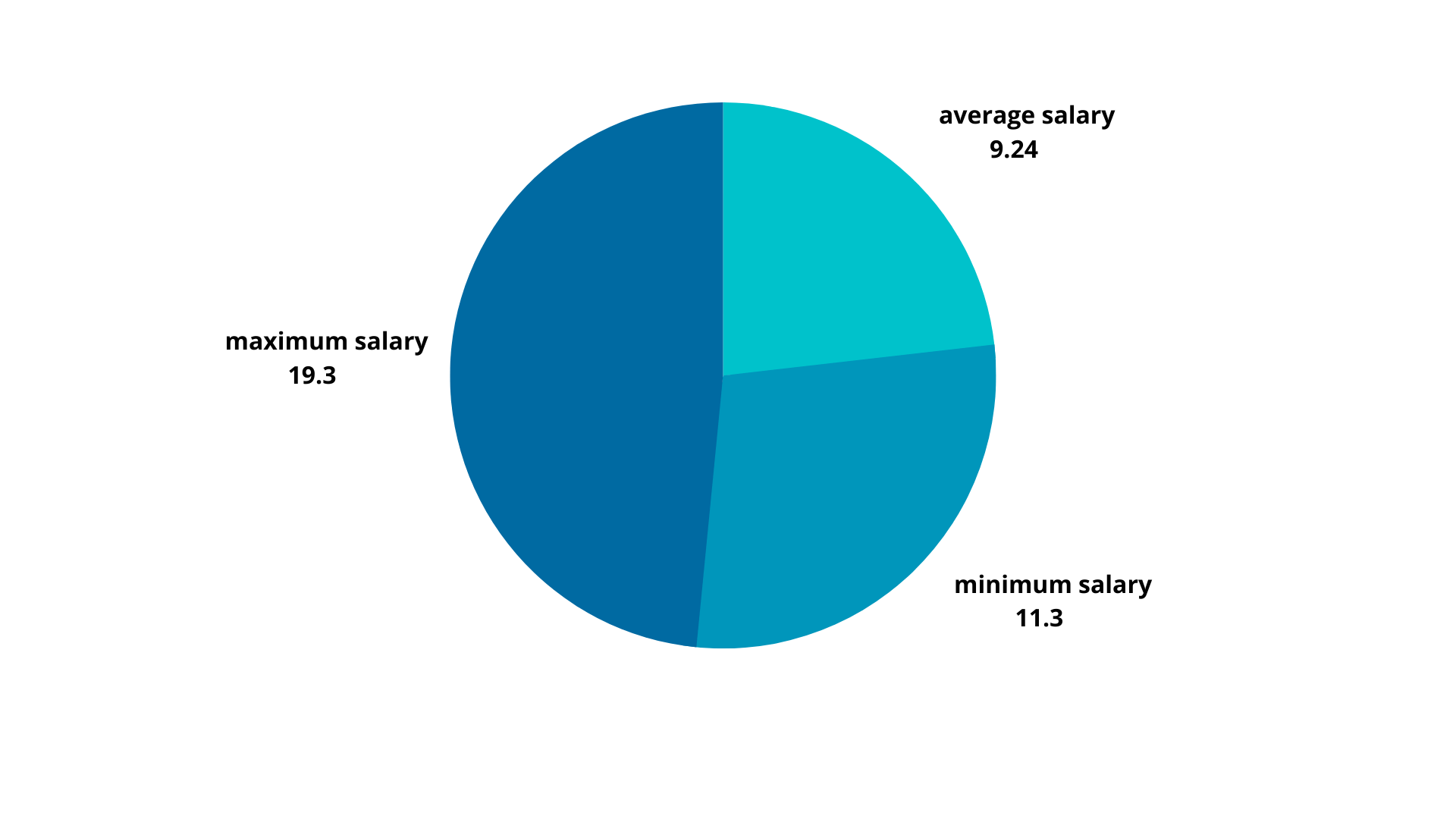
Full Stack Developer Interview Questions
The future is in your hands! Now start your career as a Full stack developer. Top 15 full stack developer interview questions for freshers have been compiled by us to help you ace your interview.
1. Which language is preferred by a full-stack developer?
It should be preferred to use full stack developers when designing the front end and other developers when repairing the back end. Full stack developers must be knowledgeable in at least two or three well-known languages, such as Java, Python, Ruby, PHP, C++, etc., as they work with a variety of technologies and applications.
2. Define pair programming?
Two programmers collaborate on a single machine when they pair programs. If the driver has any difficulties with the code, two of them will resolve the issue. The navigator, who will also code, will ensure that the code is written appropriately and will proofread and spellcheck it. The position is interchangeable at any time.
3. What are the tools used in full-stack development?
There are a few of the more well-known tools used in full-stack development.
- Backbone
- Typescript
- Electron
- Visual Studio Code
- GitHub
- CodePen
- Slack
- TypeScript
4. Differentiate “Git Pull” and “Git Fetch”.
Git Pull
Git will merge any pulled contributions into the branch you are currently working in, taking context into account. Without providing the user an opportunity to review them first, pull automatically combines them.
Git Fetch
Git gathers and stores in the local repository any commits to the target branch that does not already exist in your current branch when you fetch. The current branch is not merged with it. If you maintain a current repository while working on a project that could corrupt your update files with the aid of merge, you can include the commits into your master branch.
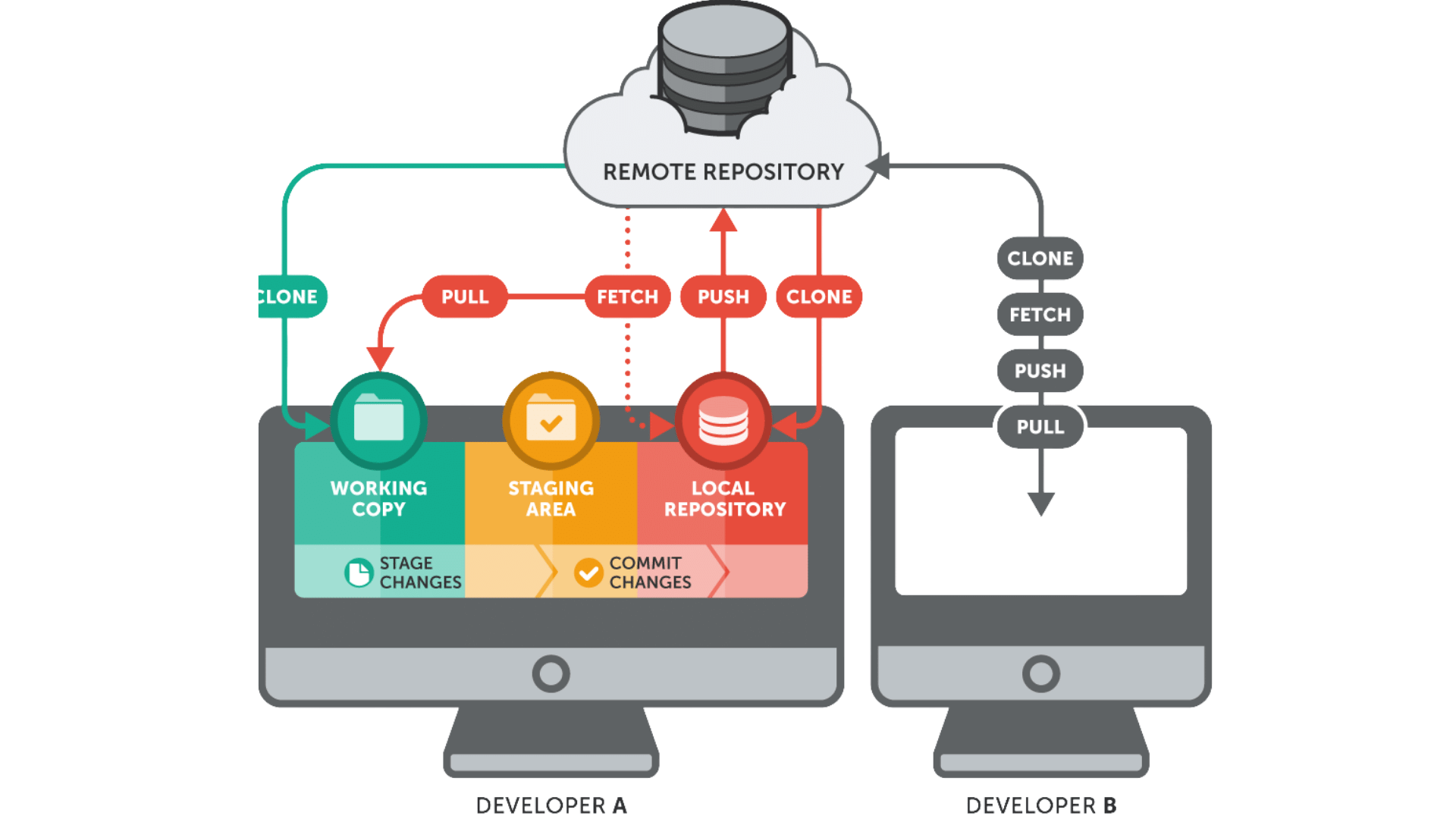
5. What do you mean by ‘Call Back Hell’?
A return parameter is required by the callback function. A callback hell condition arises when numerous asynchronous functions are chained together.
6. Explain CORS?
Cross-Origin-Resource Sharing is a process used to gain the authority of different web resources in different domains. CORS is helping to integrate web scripts that can be implemented more freely in the external content of the original domain.
7. What is long polling?
Long polling keeps the two connected, and the connection is kept up until the server client is ready to provide the data.
When a client sends a request to the server, the connection doesn’t end promptly even after the server sends the client data or when the timeout threshold is reached.
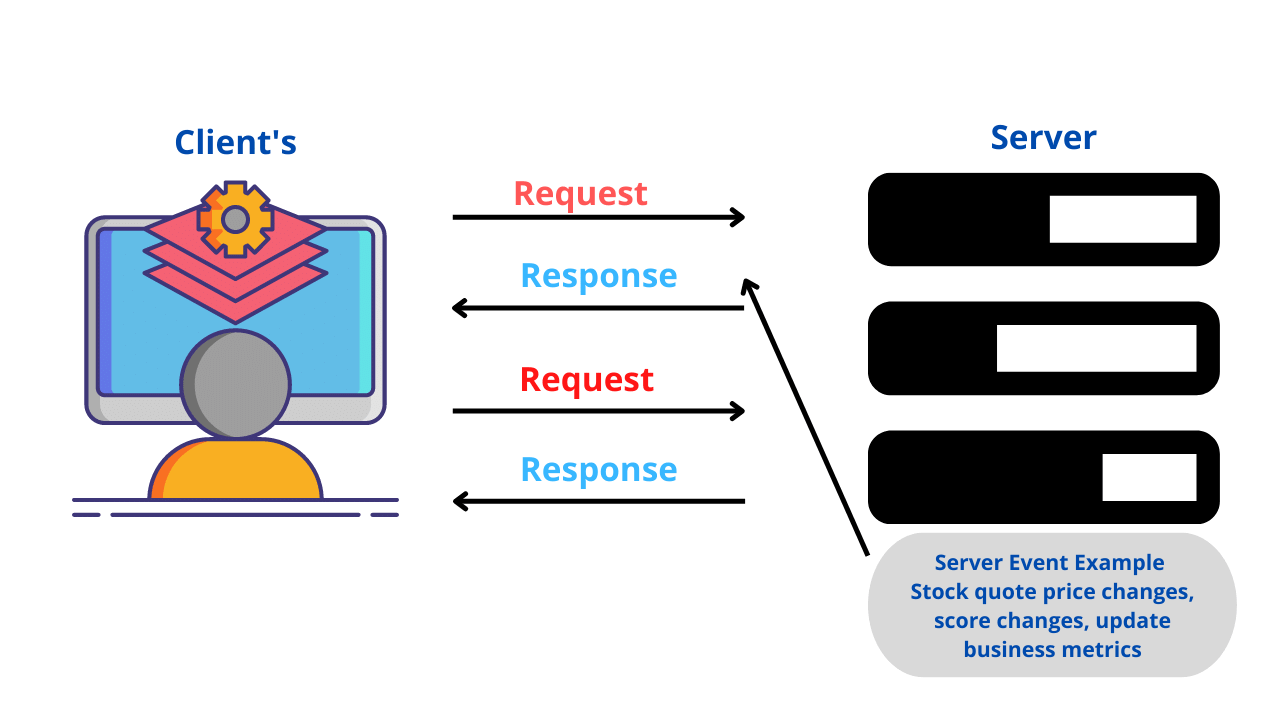
8. Describe multi-threading?
The process of multi-threading boosts the CPU’s performance. A program may be requested or handled simultaneously by many users. Operating systems that support numerous processes are not supported by multi-threading.
9. Elaborate on the inversion of control?
Software developers refer to patterns that are used to decouple system levels and components under the general phrase “inversion of control.” With the aid of inversion of control, control of certain program elements or objects is passed to a framework or container. It can be used for several mechanisms, including factory patterns, strategy design, and patterns for service locators.
10. How can we differentiate MVP and MVC Controller?
Model View Presenter (MVP)
- Model View Presenter is an architectural pattern that separates the presenter and controller from the view and controller. The presenter was used in place of the controller. It also exists on the same plane.
- The action between the view and the model is maintained, and it comprises UI business logic for the view. It uses an interface for communication.
Model View Controller (MVC)
- A Java application is created using this pattern. The logical components of this application are model, view, and controller. The model component has logic and data.
- Using the handler mapping, the controller invokes model objects after receiving input. The model items must be seen for the output view layers to be displayed.
11. What is the basic comparison between Get and Post methods?
| GET | POST |
|---|---|
GET method purpose to design for getting data from the server. |
POST method purpose to send the data from the server. |
It sends a request to the URL |
It sends a body request to HTTP |
The parameter transmitted request the query string. |
The parameter transmitted requests the body |
It is a default implement automatically. |
It specifies manually |
GET request limited data. |
POST requests a large amount of data |
GET is visible to the user in the data URL |
POST not visible to the user and put data in the message body |
GET request bookmarked and caches |
POST cannot request the bookmarked and caches |
GET is more efficient than post |
POST is less efficient |
Search is the best example of a GET |
Login is the best example of a POST |
12. What is different between GraphQL and Rest?
A highly predictable API request, GraphQL’s query outcome increases the API’s usefulness. Rest is reliant on the HTTP and URI techniques employed. Only JSON is supported by GraphQL. Support for XML, YAML, JSON, HTML and more formats is also available. Numerous microservices and mobile applications are the primary usages of GraghQL. Simple applications and resource-driven applications are the main uses of the rest.
Our Lovely Student feedback
Full Stack Developer Interview Questions for Freshers
1. State the blue dep-green deployment and rolling deployment?
Blue-green deployment
Blue and green infrastructure environments are typically created separately as part of the deployment plan. The most recent code is found in a green environment, whereas the older code is found in a blue environment. At any given time, there is only one live production.
Rolling deployment
With the help of this technique, an outdated program and its supporting infrastructure were entirely updated.
2. What is referential transparency?
This method allowed for the complete modernization of both an old application and the infrastructure that supported it.
Syntax:
var four = add(1,3) var eight = four + four var eight_v2 = add(1,3) + add(1,3) var eight_v3 = 4 + add(1,3) var eight_v4 = 8
It can be replaced with add (1,3), 4, or 1+3 wherever it appears.
3. Describe the MEAN stack
MEAN, which is an acronym for MongoDB, ExpressJS, AngularJS, and Node.JS, is a group of JavaScript-based web application development tools. It is the perfect method for creating dynamic websites and programs. It is a free and open-source stack that can be used to create web-based prototypes quickly and simply
4. What do you know about Temporal Dead Zone in ES6?
Variable declarations were limited to the use of var in ECMAScript 6 (ES6). We received a lease and a construction contract. The “{}” can be used to access declarations of both const and let, which are block-scope. Var can be used before the declaration; however, you cannot access a let or const variable until the same value has been initialized. Temporal Dead Zone is the period following the start of execution. If such variables are accessible to everyone at that time, the reference error is provided below.
console.log(varNumber) // Undefined console.loglog(letNumber); // Throws the reference error letNumber is not defined var varNumber = 3; let letNumber = 4;
5. Why arrow function not be used in ES6?
Although they have some restrictions and cannot be utilized in all situations, arrow functions provide a concise alternative to conventional functional expression. Using the arrow function, you can now write short functions. No new.target keyword exists. For relying on and establishing scope, the techniques call, apply, and bind is inappropriate.
Following is an ES5 function
function timesTwo(params) { return params * 2 } timesTwo(5); // 10 // The same function can be expressed in the arrow function in ES6: var timesTwo = params => params * 2 timesTwo(5); // 10
6. Compare Abstract and interface classes.
| Abstract | Interface |
|---|---|
There can be static, non-static, final, and non-final variables in an abstract class. |
The interface has only static and final variables. |
An abstract class can provide the implementation of the interface. |
The interface cannot be provided for the implementation of an abstract class. |
Can be extended using the keyword “extends”. |
Can be using the keyword “implements”. |
An Abstract class can have an abstract and non-abstract method. |
The interface can have an only abstract method |
7. What are server-side scripting and client-side scripting?
Server Side Scripting
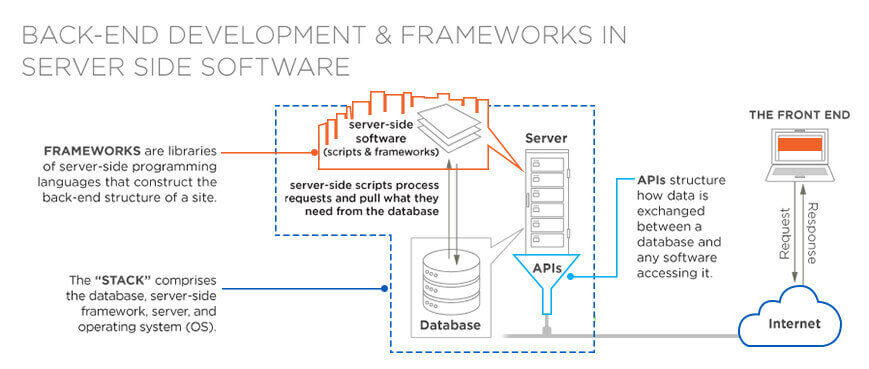
Client Side Scripting
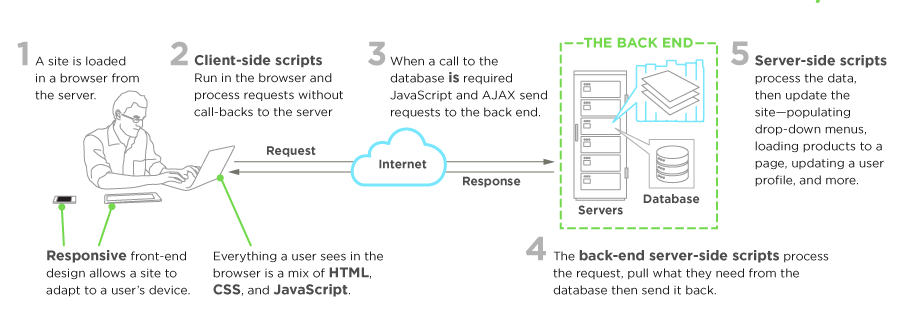
8. What is event bubbling and capturing in Javascript?
In JavaScript, “Event Flow” refers to how events spread throughout the DOM (Document Object Model). The order or sequence in which events are delivered to a certain web page is defined by the event flow. Event flow (propagation) in JS hence depends on the following factors:
Event Bubbling
In Event Bubbling, an event is first detected and processed by the innermost element before being passed on to the outermost element. Events move from child elements up the DOM tree until the topmost element is addressed.
Event Capturing
With event capturing, the event is first detected and handled by the outermost element before being propagated to the innermost element. Event cycles are propagated from the wrapper elements to the target elements that started the event.
Java Full Stack Developer Interview Questions
Java is best suited for programs such as desktop GUI apps, mobile applications, enterprise solutions, embedded systems, and middleware products. If you work as a java full stack developer interview questions and answers, and you may be qualified for these positions. In this blog, we will create some interview questions for java full stack developers. It will also help you pass an interview.
1. How do we enhance website scalability and efficiency?
- Avoiding URL redirection
- Reducing DNS lookup
- Avoiding duplicate code
- Leveraging browser cache
- Deferring parsing of JavaScript
- Avoiding unnecessary image
- Avoiding inline JavaScript and CSS
- Using src set for responsive image
- Placing all cookie-free domains, preferably using CDN
2. What is null and undefined in JavaScript? Differentiate.
| Null | Undefined |
|---|---|
Variable assigned with a null value. |
Variable is declared but not assigned any value. |
It uses a typeof operator and gives a result in an object. |
Typeof operator gives the result undefined. |
Let’s understand through this example.
var var1 var var2 = null //assigning null value to the variable var2 console.log(`var1 : ${var1}, type : ${typeof(var1)}`) console.logconsole.log(`var2 : ${var2}, type : ${typeof(var2)}`)
It generates the following output.
Var1 : undefined, type : undefined var2 : null, type : object
3. How can we fix a connection leak in Java?
A connection leak occurs when a developer fails to close the JDBC connection. The most common type of connection leak encountered in Java development is when using a connection pool (such as DBCP). We can fix it by closing the connection and paying close attention to the error handling code.
4. How do we request a dispatcher?
A request can be forwarded to another resource within the same applications using the Request Dispatcher interface, which can be an HTML, JSP, or servlet. The interface has two methods: include and forward().
5. How do we handle the spring MVC framework?
Spring MVC framework provides the following ways to handle the exception.
- Controller: we define the exception handler method in our controller class
- Global exception: exception handling a cross-cutting concern in the spring
- Exception resolver: Any spring bean declared in the application context of the dispatcher servlet that implements the resolver will be used to intercept and process the MVC system instead of being handled by the controller.
6. where is the double brace initialized in Java? How to use it?
The two distinct processes in Java are joined via a double brace initialization. The two following curly braces have a part in it.
- The first curly brace: Represent creating the anonymous inner class.
- The second curly brace: It acts as a class for initialization and represents the initialization block. An anonymous inner class’s initialization code changes to a Java double brace initialization. The enclosing outer class is referred to as the inner class. For instance, initializing a double brace is as follows
import java.util.*; public class Demo { public static void main(String args[]) { Map< String, Map < String, Integer>> map = new HashMap < tring, Map < String, Integer>> {{ put ("VEGETABLES", new HashMap< String, Integer>() {{ put ("Tomato", 300); put ("Onion", 50); put ("Carrot", 100); put ("Beetroot", 40); }} }; }}; System.out.println(map); } }
7. what is a deadlock in Java?
| Method | Deadlock |
|---|---|
Unnecessary locks. |
A deadlock results from the requirement to utilize locks only for certain members.It is advised to employ a free lock data structure. |
Nested locks. |
To avoid giving a lock to multiple threads. |
thread.join() method |
The use of thread is keeping two threads from concluding. join(). The longest you wish to wait for the thread to end. |
Lock ordering |
Each lock should always be given a number. Before purchasing both a lock with a lower and a higher numerical value. |
Time out method |
If a thread does not acquire a lock, the thread must wait for a specific time before retrying the lock. |
8. what are setter and construction injection?
Setter injection
For some properties, setter injection works better and makes class objects changeable. Both injection values are defined by the construction, and partial injection is possible. It does not produce fresh instances.
Construction injection
It is advisable to use the function Object () { [native code] } injection when an object has too many attributes because it makes the object’s class immutable. There can be no partial injection, and the setter does not inject value. It constantly produces fresh instances of alteration
Conclusion
This article is covered by Top 30 full stack developer interview questions and answers for freshers and experienced candidates who can succeed in their full stack developer careers. We hope to clear up your doubts and guide you in the right direction. Good Luck with your full stack developer interview.
